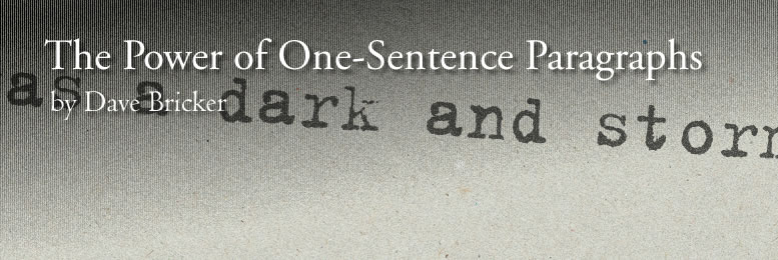The Power of One-Sentence Paragraphs
Search for “one-sentence paragraph” on the Internet and you’ll mostly find questions about whether writing them is even an acceptable practice. The one-sentence paragraph is not only legal, it’s a useful and powerful literary device.
One-sentence paragraphs are common when short pieces of dialog are being exchanged, but consider the effect of serial one-sentence paragraphs in other contexts. The following excerpt from my memoir, The Blue Monk describes an ocean crossing in a small wooden boat:
The sun marches over our heads through a field of blue, burns the horizon beyond our wake, yields to the stars, purples the east, and rises before us again.
We are aground in a river of time.
We eat.
We sleep.
With the wheel, we turn the ocean round our boat.
Days pass like silken threads on hidden currents of wind.
Hours hover like dust revealed by a sunbeam.
Forever collapses into a moment.
There can be no other side, no destination.
There is only here, only now.
The wind falls light again.
We motor over calm, shimmering seas.
The narrative reflects on the passage of time at sea. Though it could have been written as a single paragraph, consider how isolating each thought affects the pacing. This is a marriage of prose and poetry, designed to be “read aloud” in your head. Pause at each comma. Stop at the end of each sentence. Let the words ring.
And consistent single-sentence paragraphs are not a strict requirement. This is writing, not math.
The sun falls below the pines of Great Abaco.
The wind picks up.
The temperature drops.
We drag my dinghy to the top of the beach and prop it on its oars behind us to serve as a windbreak. John had the foresight to gather dry firewood back at Man-O-War Cay. We add to his collection a few pieces of driftwood we find on the beach. Behind our dinghy shelter, a small flame begins to consume our branches and wood scraps.
Yellow sparks crackle and fly high into the fast-darkening night.
Stars gather overhead.
John points into the brilliant sky. “See the three planets grouped in a small triangle there? They’re what we’ve come here for. They won’t appear this close together again for over a thousand years.”
Have you ever taken a photograph of a sunset? The resulting image inevitably fails to capture the glory of the scene; a sunset cannot be put in a frame. Sometimes, effective writing requires the author to create a detailed portrait, but “paint by numbers” also works. Your reader has seen sunsets before, experienced cold, and sat near a fire. Why not offer clues to help your reader construct his own picture from his own memories?
Short, single-line paragraphs mimic the experiencing mind. Experience, in its pure form, transcends words. More words might convey the author’s picture of an experience at the expense of the reader’s. Why place your reader in your head when you can pull her into your scene?
As they say, “the devil is in the details.”
So get rid of the details.
Write succinctly and seriously.
One-sentence paragraphs cue your reader to stop and reflect.
Of course, Victorian verbosity is as valid a writing style as postmodernist minimalism. Good writing comes from choosing the right style for a particular passage, and not from any formulaic approach. The one-sentence paragraph is one technique among many—another color in the capable writer’s palette.
